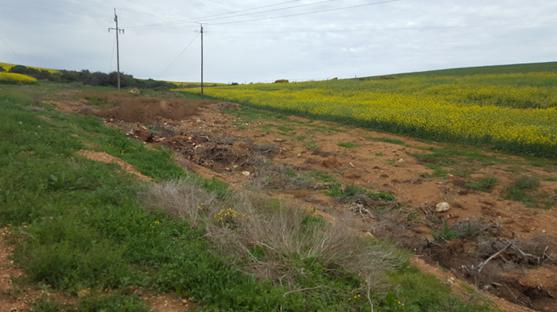Dylan Michael Jacklin
The conservation of the Critically Endangered Renosterveld vegetation type aiding the protection of one of the most biodiverse rich areas in the world and identifying specific species’ water purification capabilities. In turn protecting the freshwater system and increasing the water quality. Along the river a buffer of Renosterveld separates the agricultural planted pastures from the water, forming a natural corridor, a barrier that protects the watercourses from chemical and other contaminants. Through understanding the vegetative purification capability, we establish an ideal combination of different species each with their own preference in nutrient uptake. Aiding conservation and management practices to better understand the efficiency of certain species in the extraction of harmful nutrients before they enter the water system.

Degradation of Renosterveld is still very much an ongoing problem.
he Overberg is situated within the Cape Floristic Kingdom, home to the world's hottest biodiversity hotspot, and also one of the most Critically Endangered ecoregions. For the conservation of the critically endangered Renosterveld vegetation type we establish water corridors along watercourses, specifically for this study the Breede River. The indigenous plant species that have been identified as strong purifiers of contaminated water after the study will aid in the conservation of the biosphere. These species act as biofilters between the planted pastures and the water system, protecting the watercourses below. These corridors are important because the serve as refuges for the predatory insects that act as biological control agents of wheat aphids.

The pan mixer.
Ongoing farming practices (Canola, Wheat, Barley, Livestock etc.) means much of the biodiversity is lost to make way for agricultural practices. We believe that once the ecosystem benefits are understood the agricultural sector will push for its conservation. The quality of the freshwater systems play a critical role in farming practices and also have an effect on the more informal settlements downriver, whom rely on the river water to sustain themselves.
Restoration corridors along watercourses are the ideal landscape to consider for the protection of threatened vegetation, due to the topographical characteristics located near the river system. The steep slopes near the water body makes for undesirable farming conditions. Existing legislation also prevents agricultural practices within a specified distance above a river system.
The identification of efficient plant species capable of phytoremediating contaminated water from the agricultural sites will play a vital role in preserving the watercourses below. Perceived benefits to biodiversity conservation for farmers is the possibility of greater economic and ecological stability, especially with the growing threat of global climate change.
The purification capabilities of fertilizer and herbicide contaminants, call for the conservation of the threatened vegetation type. The vegetation acts as a layer of bio-filtration between the contamination and the natural watercourses.